Ellis Brigham | A walk through history
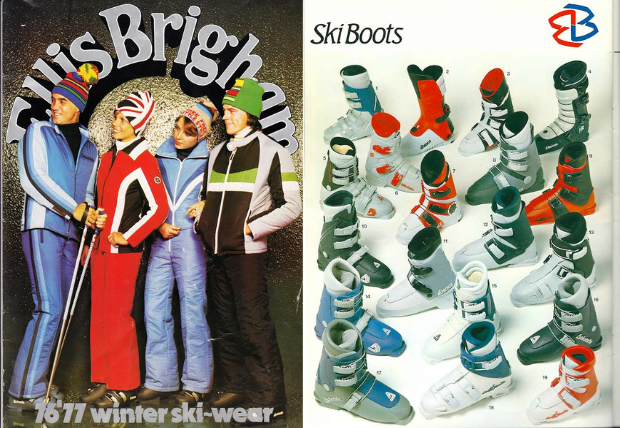

One of the UK’s most trusted outdoor retailers, Ellis Brigham Mountain Sports, celebrates its 90th anniversary this year. No mean feat given they’ve had to survive World War II, several economic recessions and a Covid pandemic to get there…
It started with a small ‘two up, two down’ shop in Manchester in 1933, set up by Yorkshireman Frederick Ellis Brigham. Fred, a boot-maker by trade, began selling cycling and running shoes before branching out into walking and climbing shoes to meet local demand. He could always be seen in his trademark Trilby hat and Harris Tweeds, a sharp pencil behind his ear.
With a ‘Bring Your Repairs Here’ sign hanging above the shop door – long before sustainability was a thing – Fred used his knowledge to invent the incredibly popular Brigham steel plate, designed to act as a fixed-on claw over the soles of boots for additional grip when climbing.
The supply of climbing and potholing boots and footwear were soon accompanied by ropes and lines, rucksacks, tents, skis, ‘sheepskin goods’, ‘hand-knit hosiery’ guides, sleeping bags and maps. F.E. Brigham was the one-stop-shop for outdoor enthusiasts. There was always ‘something new’ on show – in fact, people would walk miles just to peer into his shop windows at the latest kit and to hear what advice Fred had to offer.
After the constraints of the war, in 1945, mountain walking and climbing grew in popularity as people roamed free. The 1950s saw the first Everest summit from base camp and an increase in people from the UK visiting the Alps to climb. After the war, army surplus materials were more readily available so F.E Brigham was able to expand his range of goods for sale to meet the growing demand for outdoor ‘exploration’. Sadly, as the outdoor market began to expand further, Fred’s journey came to an end, and he passed away in the late 50s, handing the ropes to his sons Bob and Ellis, who proudly retained it as a family owned and run business even as it expanded to become a national chain.
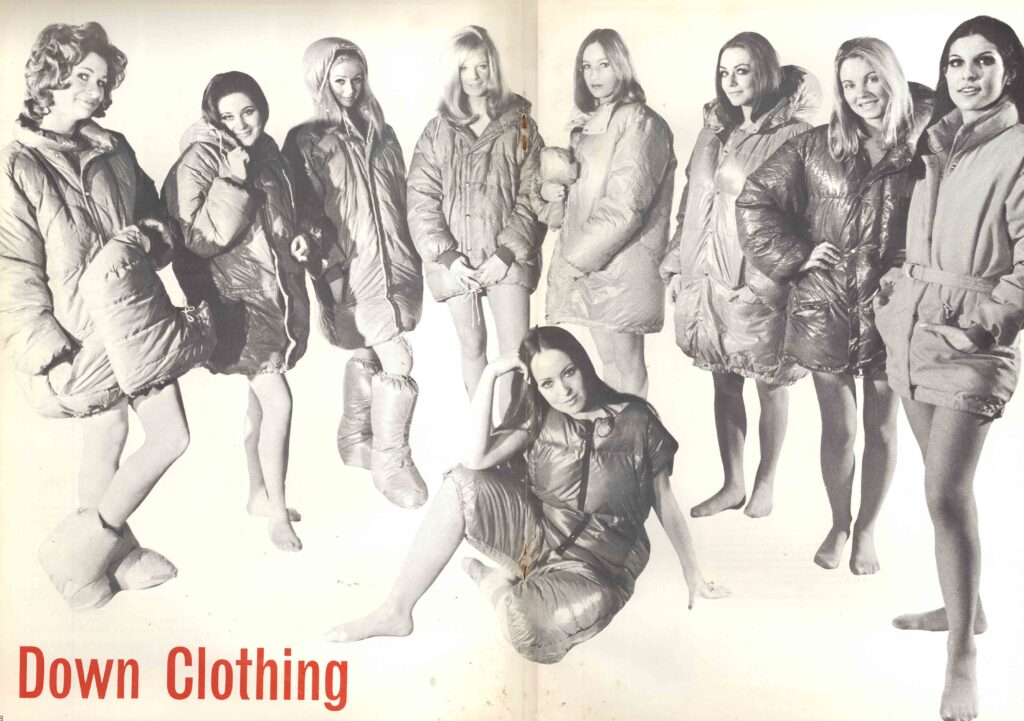
The company is now led by the third generation of Brighams – grandsons Mark and Robert. “Being a family business gives you the added incentive, loyalty and passion to do the very best thing for the customer and the business,” says Mark. “It’s a little like climbing a mountain, never being complacent, always adapting, persevering and forever exploring. We listen to our customers’ needs and continue to inspire them to embark on even more adventures through our in-store talks and events, our knowledgeable staff and the latest technologies, including custom boot and pack fittings. And if you can’t get into a store, we offer virtual appointments and regular in-store events.”
We’re sure Fred Ellis Brigham would be proud.
Ellis Brigham started with boots, so how has footwear technology and design evolved over the years?
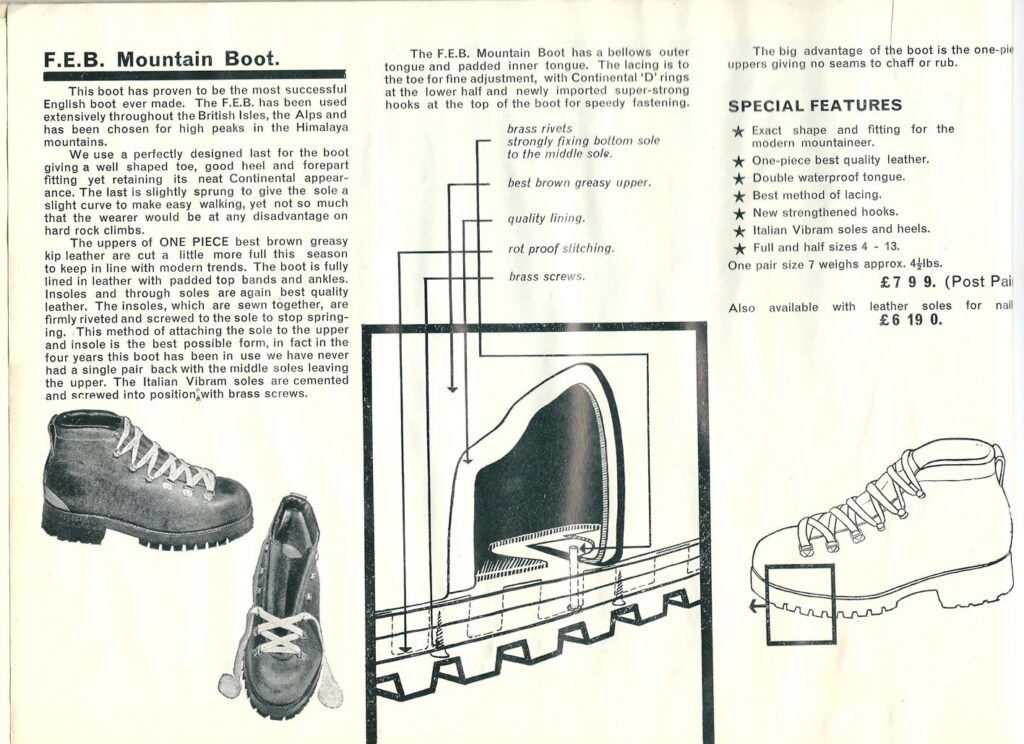
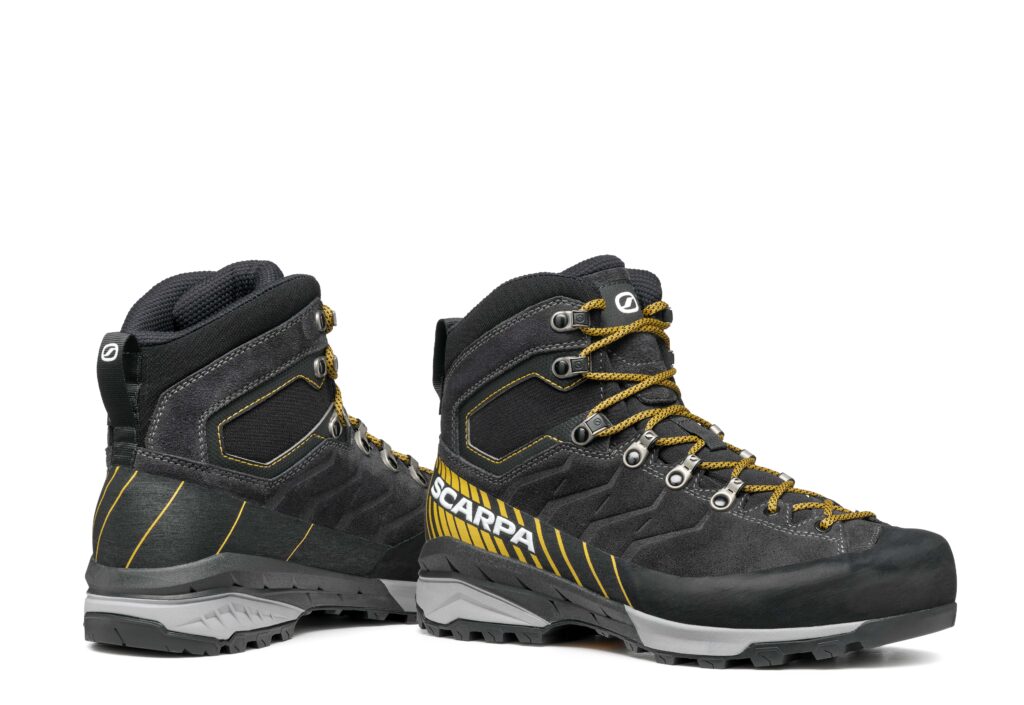
“Footwear has evolved tremendously in the 90 years since Frederick Ellis Brigham first set up shop,” says Jeremy Stevens, Footwear Buyer for Ellis Brigham.
“In the 1930s, walking boots were almost entirely constructed of leather – not just the uppers, but also the whole sole unit underneath. These leather soles had nails through them to give the necessary grip. A well-crafted pair of boots would be very durable and weather-resistant, but the combination of stout leather and metalwork meant they were relatively heavy and took some breaking in.”
At the end of the 1930s Vitale Bramani invented the Vibram rubber sole. Becoming widespread by the 1960s, this meant no more nails! Then in the late 1970s Gore developed their breathable waterproof membrane, and Gore-Tex lined hiking boots were born. This was a game-changer. Using a waterproof lining meant manufacturers could explore new upper designs, using lighter leathers and synthetics in combination. The result is a lighter and more supple upper with less break-in time, while staying waterproof. Since then many other materials have helped shave weight and boost comfort, such as EVA and PU foams for improved cushioning, and TPU films adding structure with little weight penalty.
“Today the focus is on developing recycled and sustainable materials that still deliver the performance and durability expected of outdoor footwear,” say Jeremy. “That’s the next big challenge for the outdoor footwear industry – making the difficult steps needed to reduce its (environmental) footprint.”
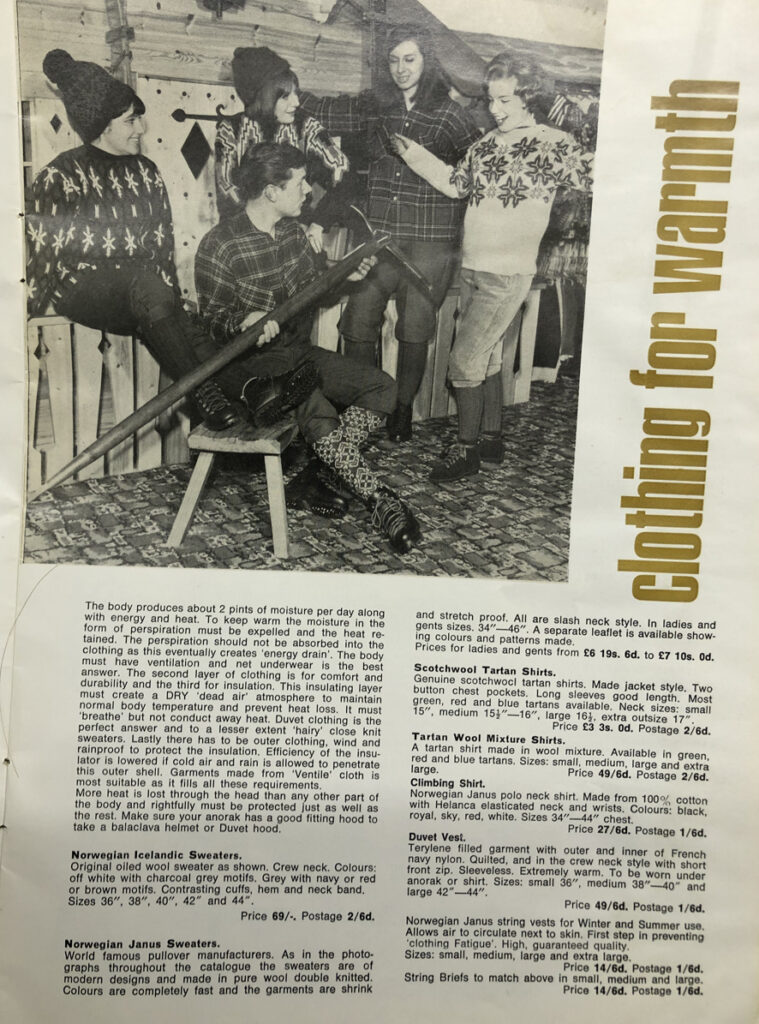
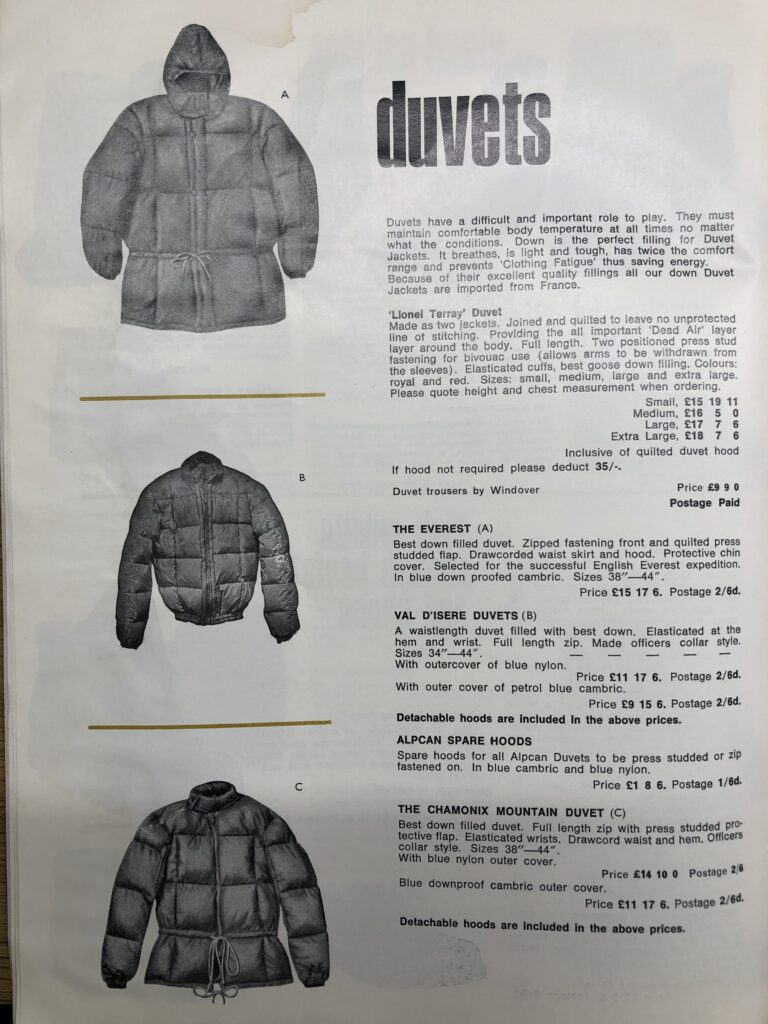
Richard Shepherd, Clothing Buyer for Ellis Brigham, explains: “In the early days, the expectations from customers were lower, they simply needed their kit to be functional – will it do the job? Yes, it did to a point, but lacked sophistication, with both design and fit leaving a lot to be desired.”
So, what’s changed? Advancement in technical fabrics has really driven innovation. Products have become so much better engineered, better fitting and more comfortable. “The brands we stock now are pushing hard from an environmental perspective, too – more sustainable, recycled fabrics are used these days, along with materials that use less resources to be produced,” explains Richard.
“It’s also become the norm that natural fabrics, such as down and merino wool, are sourced to the highest ethical standards of animal welfare – rightly so – and these are all part of the important decision-making process of deciding what to stock in our stores.”
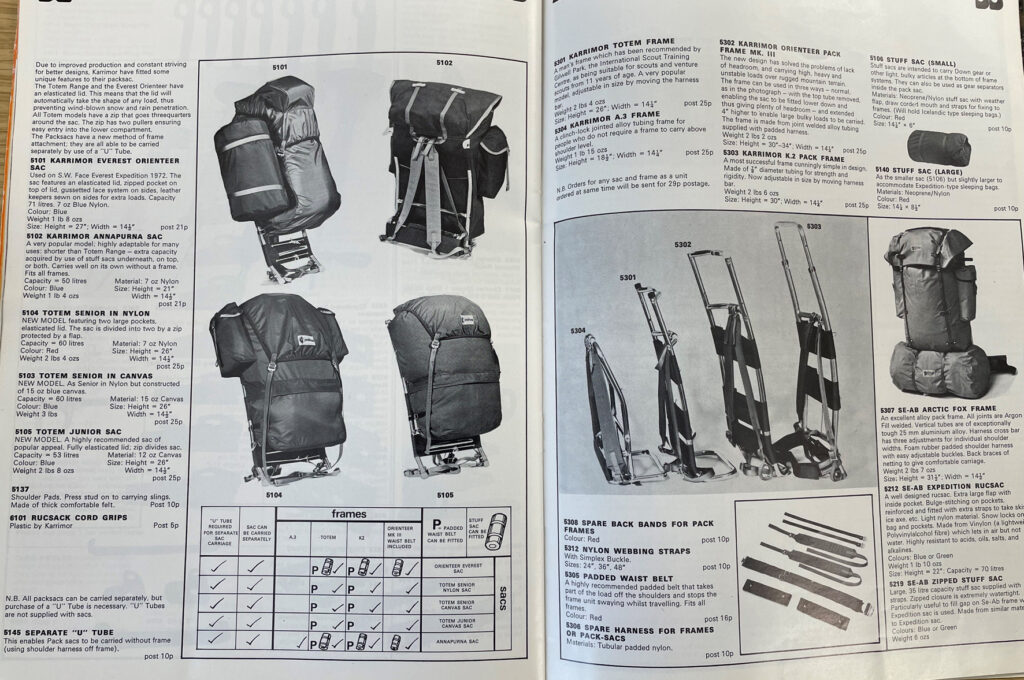
Early backpacks consisted of a pack ‘sac’ made using canvas and leather and a steel pack frame from which the sac would hang. This system proved an effective way to transport gear, but the packs were heavy and unstable when tackling challenging terrain. This all changed in 1967 when Greg Lowe from Lowe Alpine Systems created a pioneering new rucksack with an internal frame. The result was a pack that was much more stable and secure, allowing climbers and hikers to move more freely in the mountains, and it became the blueprint for modern, technical backpacks.
Today, backpacks have taken carry comfort to whole new level with innovative materials and design delivering superb load transfer and ventilation for freedom of movement. Fully adjustable back systems provide customised fits, while clever organisation and carry options, allow gear to be intuitively stowed and accessed while on the trail.
For further information on Ellis Brigham and to view their extensive range of outdoor equipment, visit the website.
Ellis Brigham Explore Weekend | 15 – 17 September
Join Ellis Brigham’s 90th anniversary celebrations with a weekend of exploration and adventure on the shores of Llyn Tegid, Bala, North Wales from 15 to 17 September 2023. Activities will include hiking, paddle boarding, rock climbing, trail running, wild swimming, yoga, outdoor cooking demos and more. Camping tickets start at £165 per couple.